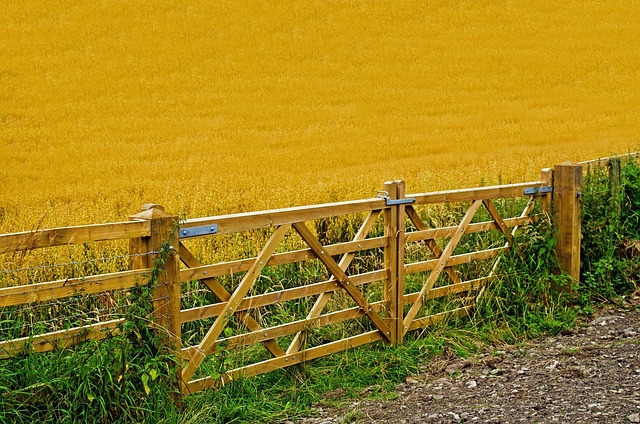In New Bedford, MA, a vinyl fence can enhance your property’s curb appeal, provide security, and offer lasting durability. This guide delves into the world of vinyl fence installation, empowering homeowners with knowledge. From understanding local regulations to selecting the right contractor, we cover it all. Explore different fence styles and their benefits, master the installation process step-by-step, and learn maintenance tips for longevity. By the end, you’ll be equipped to make informed decisions for your New Bedford vinyl fence project.
- Understanding Vinyl Fence Installation in New Bedford
- Choosing the Right Contractor for Your Project
- Types of Vinyl Fences and Their Benefits
- The Installation Process: Step-by-Step Guide
- Maintenance Tips for Longevity and Aesthetics
- Local Regulations and Permits for Vinyl Fencing
Understanding Vinyl Fence Installation in New Bedford
When considering vinyl fence installation in New Bedford, it’s crucial to understand both the process and the benefits this option offers. Vinyl fences are a popular choice among homeowners due to their durability and low maintenance requirements. The installation process typically involves measuring the perimeter of your desired fence area, ordering the appropriate length of vinyl fencing, and scheduling a time for the actual installation.
Contractors will begin by preparing the ground, ensuring it’s level and clear of any obstructions. They then dig post holes, set in the posts, and attach the panels to create the fence. The finished product offers a sleek, modern look while providing security and privacy. Vinyl fences are resistant to rot, rust, and damage from elements, making them a long-lasting investment for New Bedford properties.
Choosing the Right Contractor for Your Project
When selecting a vinyl fence installation contractor in New Bedford, MA, it’s crucial to prioritize experience and expertise. Look for companies that specialize in vinyl fencing, as they’ll have a deep understanding of this material’s unique properties and installation techniques. Check their portfolio and reviews to ensure they deliver high-quality work and customer satisfaction.
Additionally, consider their project management approach. Reputable contractors will provide transparent communication throughout the process, offering clear estimates, timely updates, and addressing any concerns promptly. A good contractor should also be licensed, insured, and bonded, safeguarding your investment and ensuring professional accountability.
Types of Vinyl Fences and Their Benefits
Vinyl fences come in various styles, each offering unique benefits for different preferences and needs. The most common types include picket fences, known for their classic look with individual boards creating a charming border; privacy fences, designed to block out neighboring views while allowing light penetration; and post-and-rail fences, characterized by two vertical posts supporting horizontal rails, ideal for defining property lines or adding a rustic touch.
One of the biggest advantages of vinyl fences is their durability. They are resistant to rot, rust, and pest damage, ensuring longevity without requiring frequent maintenance. Vinyl also offers excellent insulation, helping regulate temperatures within your yard, and its non-conductive nature makes it safe during storms. Moreover, these fences are easy to clean and maintain, requiring only occasional washing with mild soap and water.
The Installation Process: Step-by-Step Guide
The installation process for a vinyl fence begins with careful planning and preparation. Contractors will first assess the site, measuring the perimeter and determining the design requirements. This includes deciding on the style, height, and any additional features like gates or posts. Once approved, they clear the area, ensuring it’s level and ready for construction.
The next step involves digging holes for the fence posts, which are then set in concrete to provide a sturdy foundation. The posts are securely attached, and the contractors begin installing the vertical panels, typically made of durable vinyl. These panels are fitted tightly together, creating a seamless barrier. Gates and other accessories are added according to the design, ensuring proper alignment and functionality before the final coating of sealant is applied for protection.
Maintenance Tips for Longevity and Aesthetics
Local Regulations and Permits for Vinyl Fencing
Before hiring vinyl fence installation contractors in New Bedford, MA, it’s crucial to understand the local regulations and permit requirements. Each municipality has its own set of rules regarding property improvements, including fencing. These regulations are designed to ensure that any new construction complies with safety, aesthetic, and zoning standards. In New Bedford, homeowners typically need to obtain a building permit from the city or town building department before proceeding with vinyl fence installation.
The permitting process usually involves submitting an application along with detailed plans of the proposed fence. These plans should include measurements, material specifications, and the location of the fence in relation to property lines and existing structures. Once approved, contractors must adhere to the specific requirements outlined in the permit, ensuring that the installed fence meets all necessary codes and regulations. Compliance with these local rules not only guarantees a safe and durable fence but also avoids potential fines or legal issues for homeowners.
